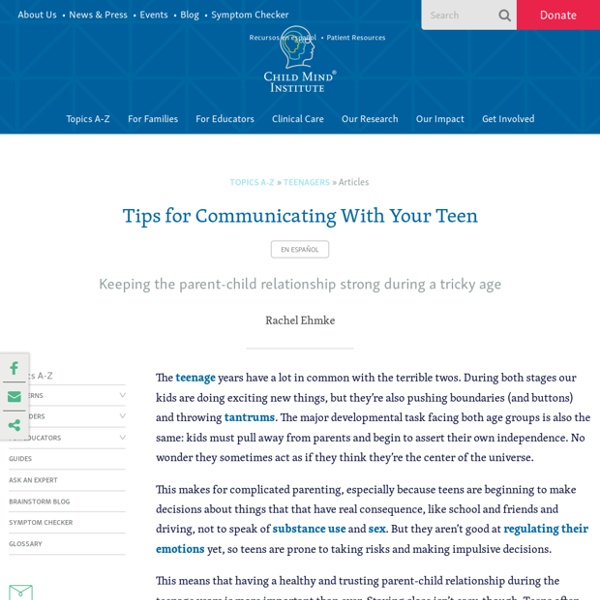Parenting: Preparing For Adolescence
Parenting: Preparing For Adolescence No. 56; December 2015 Parenting can be the most rewarding work of adult life. Nothing brings more joy and pride than a happy, productive, and loving child. Each age and stage of a child's development has specific goals and tasks.
Your Teen's Search for Identity
Their bodies kick into overdrive. They find themselves disoriented, scared and alone. They become moody, secretive and sarcastic. You don’t recognize your own child.
Adolescent Identity Development: What to Expect in Teens
Adolescent Identity Development: The Factors of Change Among the profound and exciting changes taking place in adolescence is the process of self-discovery. Our teens are working to figure out who they are, making adolescent identity development a central feature of teen life.
How Do Teens Form Their Identity?
Adolescence is the period from the beginning of puberty (13 or 14 years old) to age 18. People usually think of it as a difficult stage, but many people go through adolescence without any problems. Still, it’s important to keep in mind that teens form their identity during this time and they go through a lot of changes. The objective of these identity changes is for teens to become independent. It’s preparation to enter adult life, with all its rights and responsibilities. So, how do teens form their identity?
Why Is Teen Identity Development Important?
Though it can be hard for parents to let go and acknowledge their teen needs external help, a credible adventure therapy program can relatively quickly and positively change your son or daughter’s life for the better. Psychologist Erik Erikson advocated that teen identity development is fostered by experiences that allow individuals to express their individuality and receive feedback and validation from others. Adventure therapy programs provide experiences that promote healthier relationships and positive identity formation in teens. A credible adventure therapy program can also positively affect a teen’s self-perception, confidence, and leadership skills by providing unique experiences and challenging opportunities that develop competence and confidence from within. Wilderness Therapy Promotes Healthy Teen Relationships
Identity Status - an overview
Empirical Evidence Until recently, few studies addressed the identity–creativity question. First, studying high school and college samples, Waterman and colleagues found that poetry writing—but not journal writing—was significantly related to identity achievement (Waterman & Archer, 1979; Waterman, Kohutis, & Pulone, 1977). Moreover, in longitudinal research, the dimension of “cultural sophistication” (including artistic interests) predicted later identity achievement (Waterman & Goldman, 1976; Waterman & Waterman, 1971).
15.2: James Marcia – Theory of Identity Development - Social Sci LibreTexts
One approach to assessing identity development was proposed by James Marcia. In his approach, adolescents are asking questions regarding their exploration of and commitment to issues related to occupation, politics, religion, and sexual behavior. Studies assessing how teens pass through Marcia’s stages show that although most teens eventually succeed in developing a stable identity, the path to it is not always easy and there are many routes that can be taken. Some teens may simply adopt the beliefs of their parents or the first role that is offered to them, perhaps at the expense of searching for other more promising possibilities (foreclosure status). Other teens may spend years trying on different possible identities (moratorium status) before finally choosing one. 6 Marcia identified four identity statuses that represent the four possible combinations of the dimension of commitment and exploration. 7
Identity Development Theory
Identity Development Theory A well-developed identity is comprised of goals, values, and beliefs to which a person is committed. It is the awareness of the consistency in self over time, the recognition of this consistency by others (Erikson, 1980). The process of identity development is both an individual and social phenomenon (Adams & Marshall, 1996). Much of this process is assumed during adolescence when cognitive development allows for an individual to construct a ‘theory of self’ (Elkind, 1998) based on exposure to role models and identity options (Erikson, 1980).



